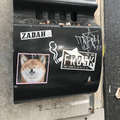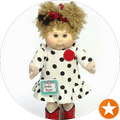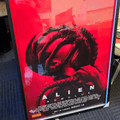“I think my blocked drain was caused by cat litter we’ve been flushing…”
This recent call from a distressed homeowner in Point Cook isn’t unusual for Melbourne plumbers. The culprit? So-called “flushable” cat litter that promised convenience but delivered a plumbing nightmare instead.
If you’re a cat owner, you’re all too familiar with the daily chore of scooping the litter box. It’s tempting to believe the marketing claims on some cat litter packages that boldly state “flushable” - suggesting a quick and easy solution to disposal. Just flush and forget, right?
Unfortunately, the reality is far more complicated. Despite what product labels might claim, flushing cat litter - any cat litter - can lead to serious consequences for your plumbing system, public health, and the environment. This is particularly true in Melbourne, where our aging infrastructure and water conservation systems create unique challenges.
As a Melbourne plumber I’ve seen more blocked drains from ‘flushable’ products in the last five years than in my previous fifteen years of work. Cat litter is one of the worst offenders because people genuinely believe the packaging claims.
Let’s look at why that “flushable” label might be misleading you, and what you should do instead.
“Flushable” Cat Litter Products in the Australian Market
Walk down the pet aisle of any major Australian retailer like Coles or Woolworths, and you’ll likely come across several cat litter products marketed as “flushable.” Popular brands include:
- Michu Mixed Tofu Cat Litter
- Rufus and Coco Eco Plant Clumping Litter
- Poowee Eco Flushable Cat Litter
These products are typically made from biodegradable materials like tofu, corn, wheat, or recycled paper, and they’re often marketed as eco-friendly alternatives to traditional clay litters. The packaging may suggest that these products break down like toilet paper when flushed, making them safe for your plumbing and septic systems.
“I bought flushable litter thinking it was the environmentally responsible choice,” said Werribee cat owner Mia Chang. “After a $350 emergency plumber visit, I learned the hard way that ‘flushable’ doesn’t mean what you think it does.”
It’s worth noting that some retailers are beginning to recognise the problems associated with these claims. Pet Circle, for example, has stopped promoting such products as “flushable,” reflecting a growing awareness about the issues these products can cause.
The disconnect between marketing claims and reality has led many Australian households to unwittingly damage their plumbing systems and contribute to larger infrastructure problems.
The Plumbing Nightmare: How Cat Litter Affects Your Pipes
Regardless of what the packaging claims, cat litter - even the “flushable” varieties - can be disastrous for your home’s plumbing system. Here’s why:
Expansion in Pipes
When cat litter enters your plumbing system, it absorbs water and expands. This expansion can create blockages, particularly at bends in the pipes or at joins where multiple pipes connect. As more litter accumulates, the blockage grows, eventually leading to a complete obstruction.
Inadequate Breakdown
Unlike toilet paper, which is designed to break down quickly in water, even “flushable” cat litter doesn’t disintegrate efficiently. The materials might eventually break down, but not fast enough to prevent them from causing problems as they move through your pipes.
Low-Flow Toilet Issues
If your home has modern low-flow toilets (most toilets manufactured after 1992), the problem is even worse. These water-saving fixtures don’t provide enough water volume to effectively move cat litter through the plumbing system. The result? Litter sits in your pipes, absorbing water and creating blockages.
Take our Point Cook homeowner, for example. They’d been flushing “flushable” tofu litter for months, believing it was safe. The result was a completely blocked sewer line that required professional intervention to clear - a costly and avoidable expense.
The worst culprit is traditional clay-based litter, which contains bentonite clay. When this material mixes with water, it forms a cement-like compound that can permanently damage your plumbing. But even natural “flushable” alternatives can cause significant problems.
Health Concerns: The Toxoplasma Threat
Beyond the risk to your plumbing, flushing cat waste introduces a more insidious threat to public health: Toxoplasma gondii.
This microscopic parasite is commonly found in cat feces and can cause a disease called toxoplasmosis. While healthy adults typically experience mild symptoms if any, the parasite poses serious risks to certain populations:
- Pregnant women: Toxoplasmosis can cause miscarriage, stillbirth, or severe birth defects in developing babies
- People with weakened immune systems: Including those with HIV/AIDS, cancer patients, or transplant recipients
- The elderly: Who may experience more severe symptoms than the general population
The concerning aspect of T. gondii is its resilience. Most water treatment facilities aren’t specifically designed to eliminate this parasite. It can survive many standard water treatment processes and potentially find its way into local waterways and even oceans, where it affects marine life.
Studies have shown that the parasite can cause brain inflammation in marine mammals and has been linked to sea otter deaths in coastal areas where cat waste enters the ecosystem. When our water systems can’t fully remove this parasite, we risk creating a cycle of environmental contamination and potential human exposure.
Threats to Australian Waterways
The environmental consequences of flushing cat waste extend far beyond the parasite concern. Australia’s waterways are already under significant stress from various pollutants, and adding cat litter to the mix only compounds the problem.
Cat litter, particularly clay-based varieties, doesn’t dissolve in water. Instead, it settles into the sediment of rivers, lakes, and oceans, potentially altering the natural ecosystem. The minerals and chemicals in litter can disrupt water treatment processes and harm aquatic plants and animals.
Impact on Hobsons Bay Native Wildlife
In coastal areas around Melbourne, researchers have documented cases where T. gondii from cat waste has infected marine mammals. This problem is particularly concerning for Australia’s unique marine ecosystems.
Strain on Treatment Facilities
Even biodegradable litters pose a problem when flushed. They add an unnecessary burden to water treatment facilities, which aren’t designed to process these materials. This leads to increased processing costs that are ultimately passed on to ratepayers.
Melbourne Water states explicitly on their website: “Only the three Ps - pee, poo (human), and toilet paper - should be flushed. Everything else belongs in the bin.” They further note that inappropriately flushed items cost Victorian ratepayers millions of dollars each year in preventable maintenance.
When cat litter enters this system, it creates an additional strain on infrastructure that wasn’t designed to handle it.
Understanding Different Types of Cat Litter
To understand why cat litter shouldn’t be flushed, it helps to know more about the different types available on the Australian market:
Clay Litter
Clay-based litters are among the most popular and affordable options. However, they’re absolutely unsuitable for flushing because they contain bentonite clay, which forms a cement-like substance when wet. This can create impenetrable blockages in your plumbing and damage septic systems.
Crystal/Silica Gel Litter
Crystal litters, made from silica gel, are popular for their high absorbency and odor control. These should never be flushed as they’re non-biodegradable and don’t break down in water. They can cause severe plumbing blockages and, if they reach waterways, remain in the environment indefinitely.
Pine/Wood Litters
While pine litter seems environmentally friendly, it’s not suitable for flushing. When wet, pine pellets disintegrate into sawdust that can form clumps in your plumbing. Additionally, the essential oils in pine can be harmful to water ecosystems.
“Flushable” Varieties
These litters are typically made from:
- Wheat
- Corn
- Paper
- Grass seed
While these materials are biodegradable, they still don’t break down quickly enough to be safely flushed. They can accumulate in pipes and cause blockages, particularly in low-flow toilets or older plumbing systems.
Australian Regulations and Recommendations
Australia doesn’t have specific nationwide laws prohibiting the flushing of cat litter, which contributes to the confusion among pet owners. However, local councils and water authorities have clear recommendations about what should go down the toilet.
The 3 Ps Rule
Melbourne Water, like most Australian water authorities, follows the principle that only three things should be flushed: pee, poo (human), and toilet paper - often called “the 3 Ps.” Everything else, including cat waste and litter, should be disposed of in the rubbish bin.
A spokesperson for Melbourne Water explains: “Our sewage systems are specifically designed to handle human waste and toilet paper. Anything else - even products labelled ‘flushable’ - can cause blockages in the system. These blockages aren’t just inconvenient; they can lead to raw sewage overflows into our streets and waterways.”
Local Council Guidelines
This guidance isn’t arbitrary. It reflects the design limitations of our sewage systems and water treatment facilities, which were built specifically to handle human waste and toilet paper. Adding anything else increases the risk of blockages, overflows, and environmental contamination.
Some local councils may have more specific guidelines about pet waste disposal, particularly in areas with sensitive waterways or history of sewage problems. For example, the City of Greater Geelong provides specific guidance against flushing any pet waste in their waste disposal guidelines. It’s always worth checking with your local authority for any specific recommendations in your area.
Better Alternatives for Disposing of Cat Waste
If flushing isn’t an option, what should Australian cat owners do instead? Here are the best alternatives:
The Bag and Bin Method
The most reliable approach is to scoop cat waste into a biodegradable bag and dispose of it with your regular household garbage. This method is simple, effective, and poses minimal risk to your plumbing and the environment.
“We’ve switched to the bag and bin method for our three cats,” shares Altona Meadows cat owner Lisa Thompson. “I use biodegradable bags and scoop daily. It takes less than a minute and has actually been more convenient than trying to flush litter, which often clogged our toilet anyway.”
Using Biodegradable Bags
Opt for biodegradable bags specifically designed for pet waste. These break down more easily in landfill conditions than standard plastic bags, reducing the environmental impact. Brands like Biobag and Pooch Pick Up offer compostable options widely available in Australian pet stores.
Litter Disposal Systems
Products like the Litter Genie provide a convenient way to store cat waste between garbage days. These systems seal in odours and allow you to collect multiple days’ worth of waste before taking it to your outdoor bin.
The company claims, “The Litter Genie changes everything. Now you only take cat waste out once a week instead of daily, and your apartment will never smell like cat litter.”
Biodegradable Cat Litter Options
If environmental impact is your concern, consider these Australian biodegradable options:
- Breeders Choice Cat Litter (made from recycled paper)
- Trouble & Trix Natural Cat Litter (made from plant extracts with baking soda)
- Oz Pet Litter (plant-based material)
- Catmate Litter (made from recycled timber)
While these still shouldn’t be flushed, they’ll break down more readily in landfill environments than clay or crystal alternatives.
Quick Disposal Tips
- Scoop litter boxes daily for odour control
- Double-bag waste if using very thin biodegradable bags
- Place bags in outdoor bins rather than indoor ones to minimise odours
- Consider a designated pet waste bin with a tight-fitting lid
- Wash hands thoroughly after handling cat waste
The Proper Composting Process for Cat Waste
For the environmentally conscious, composting can be an option - but it requires careful attention to detail. Cat waste composting isn’t suitable for casual or cold composting methods due to the potential presence of parasites.
If you’re serious about composting cat waste:
- Use a dedicated compost bin specifically for pet waste, separate from your regular compost
- Ensure your compost reaches temperatures of 60-71°C to kill pathogens
- Add carbon sources like sawdust, shredded newspaper, or dry leaves to balance the nitrogen in cat waste
- Turn the compost regularly to ensure proper aeration
- Allow for extended composting time (six months to a year)
- Never use the resulting compost on edible plants or in vegetable gardens
- Avoid this method if you’re pregnant, immunocompromised, or have young children who might contact the compost
Composting is only suitable for biodegradable litters like those made from paper, wood, or plant materials. Clay and crystal litters should never be composted.
Beyond Cat Litter: What Can and Cannot Be Flushed
The confusion around cat litter points to a larger issue: many Australians aren’t clear about what should and shouldn’t go down the toilet. Here’s a simple guide:
What CAN Be Flushed:
- Human waste
- Toilet paper (designed to break down in water)
What Should NEVER Be Flushed:
- Cat litter and pet waste
- Wet wipes (even those labeled “flushable”)
- Sanitary products
- Cotton buds/Q-tips
- Dental floss
- Hair
- Medication
- Cooking fats and oils
- Food scraps
- Paint, chemicals, or solvents
Flushing inappropriate items costs Australian water authorities millions each year in maintenance and repairs. These costs ultimately get passed to consumers through higher water bills.
Melbourne Water reports that about 75% of sewer blockages involve items that should never have been flushed. Each blockage can cost thousands of dollars to clear, not including the potential environmental damage from sewage overflows.
Frequently Asked Questions
Can I flush a small amount of cat litter?
Can I flush cat poop without the litter?
Is there any brand of cat litter that’s truly safe to flush?
Will biodegradable cat litter break down in the water system?
What’s the most environmentally friendly way to dispose of cat litter?
The convenience promised by “flushable” cat litter comes with hidden costs - to your home’s plumbing, to public health, and to the environment. Despite marketing claims, the reality is that no cat litter is truly safe to flush, especially in Australia’s water-conscious plumbing systems.
The five minutes you save by flushing cat litter isn’t worth the hours of stress and hundreds of dollars you’ll spend when your pipes block. I’ve seen entire sections of pipe that needed replacing because of hardened cat litter deposits.
The safest approach is straightforward: bag it and bin it. This simple habit protects your pipes, prevents costly plumbing repairs, and helps safeguard our waterways from contamination.
If environmental impact is your concern, focus on biodegradable litter options and proper disposal methods rather than flushing. The truly eco-friendly choice isn’t always the one that seems most convenient.
By making informed choices about cat waste disposal, you’re not just protecting your home - you’re also contributing to the health of Australia’s water systems for generations to come.
Remember, when it comes to your toilet, stick to the 3 Ps - pee, poo (human), and paper. Your pipes, your wallet, and our precious Australian waterways will thank you.
More articles











































